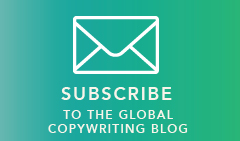Native advertising has been under scrutiny as brands and content marketers discover new ways to get their message out. Daniel Hatch wades into the mire with this guest post, wasting no time making pointed judgements about the rights and wrongs surrounding the heated issue. -Ed.
Sit down. I have some bad news for you.
 It’s about native advertising. I’m afraid — and I’m sorry to be the bearer of such bad news — it doesn’t actually exist. It’s a deceptive sleight of hand.
It’s about native advertising. I’m afraid — and I’m sorry to be the bearer of such bad news — it doesn’t actually exist. It’s a deceptive sleight of hand.
The industry’s latest buzzword is actually a rebadged, repackaged and very old concept: It’s actually just sponsored content.
So why is everyone so excited about it? Well, native advertising sounds good. Native things are natural, normal; they should be there. They are things that belong in the environment in which you find them.
The term “native advertising” is just marketers marketing marketing. It’s a more palatable term than “sponsorship” or, heaven forbid, “advertorial”. Those words sound too much like what native advertising actually is: advertising.
Like it or not, if you have parted with money in exchange for expressly plugging or otherwise linking your brand to editorial content, then it’s advertising.
No matter how cleverly that advertising is placed or interwoven into the content, it’s still advertising.
What bothers me about native advertising is that instead of openly advertising alongside, or sponsoring, content (in other words, acknowledging the commercial involvement of a brand) this feels like marketers being sneaky.
Being able to advertise your brand in a way that looks like “earned media” is something of a holy grail for marketers. In a weasel word term like “native advertising” it seems marketers have finally found the Northwest Passage around the annoying filter of journalists — and at a time when there are new platforms willing to blur the lines between editorial and advertising.
I’m not remotely anti-advertising. I love advertising. But I come at this like an old-fashioned journalist (I’m unapologetic about that). The newspaper industry has had 300 years to establish the rules surrounding the areas where advertising and editorial meet, and marketers would be foolish not to heed those lessons.
First rule of journalism
Rule number one: if you paid for it, then it’s advertising and it should be disclosed.
What journalists and editors know is that when readers get a whiff that content is not authentic, that’s it — they’re out of there. You’ve lost credibility and you’ve broken your trust with the audience. Legitimate platforms won’t risk that and apply rigor and accountability to whatever they publish. There’s a reason “earned media” is so hard to get.
Yes, this is absolutely about ethics. But it’s also about brands treating audiences with respect rather than contempt.
Ask yourself this: Would the reader feel deceived if they found out this content was, in fact, paid content? It’s a question newspaper editors have asked for decades and that, in recent times, any blogger with a decent following has come to quickly understand. Audiences don’t mind sponsored content — some of it is fantastic, after all — but they do expect disclosure.
But everyone else is doing it
So what about platforms like BuzzFeed, that don’t make the pretence of being news? Isn’t it essentially an entertainment platform that flirts with being “newsy” if the subject is trending on Twitter and can be summed up in a series of Seinfeld gifs?
Yes. But it’s the same consumer, you’re the same brand, it’s the same trust relationship, and the old rules still apply.
The BuzzFeed model is to create content to fit the advertiser, rather than the traditional media model of creating the content first and finding the right sponsor later. I don’t actually have a problem with that — although many in my profession would. (Perhaps it’s the way forward for cash-strapped media organisations?) But what I do have a serious problem with is the idea that such content might not be clearly labelled as sponsored.
BuzzFeed is a wonderful product — shareable digital fodder for office workers bored on their lunch-break — and much of it is cleverly laced with a client’s message. If it had been published on a brand’s own platform (its owned media) you’d call it well-executed content marketing.
But no matter how cleverly written or how funny the content might be, if it is published on a third party platform (whether it is an entertainment platform, a news website or a key influencer’s blog) then it is sponsored content. Ethically, it must be disclosed as such. Anything else is dishonest. Inventing a new buzzword to get around it still doesn’t make it OK. Not with me, and not with your audience, either.
 Daniel Hatch is marketing and media editor at The West Australian newspaper, a freelance journalist and a content marketer. Follow him on Twitter @daniel_hatch
Daniel Hatch is marketing and media editor at The West Australian newspaper, a freelance journalist and a content marketer. Follow him on Twitter @daniel_hatch


Recent Comments